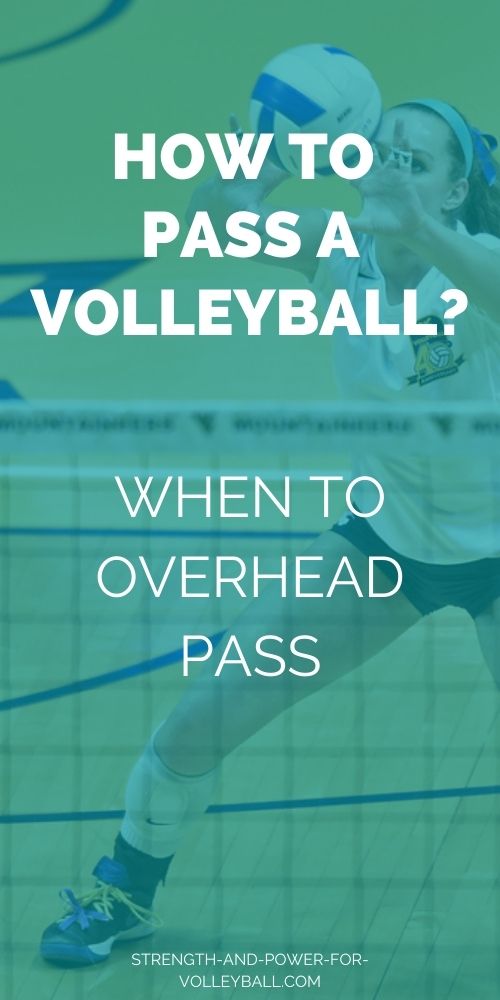Passing Volleyball Skills
Serve Receive and Defense
The key to passing volleyball skills is being in an athletic posture ready to react and move every second the ball is in play.
Ready Stance
Players should start in an athletic position relaxed and ready to move.
Stand with your knees flexed comfortably with your weight on the balls
of your feet.
React and Move
Footwork must be quick and aggressive to allow time to get in front of the ball to pass.
Your first step should be with the foot that is closest to the ball. When moving, your head should not bounce. It is to your advantage to arrive early to play the ball.
The earlier you are, the more time you have to make quick adjustments to your foot positions.
Track the ball
As a passer, it's best to track the ball from the time it leaves the servers hand to the time it reaches your arms.
Pay attention to how the server contacts the ball and how the ball moves as it comes to your side of the court.
Look to see if the ball is spinning or floating to help get a read on where the ball is going to end up.
Develop a rhythm and flow to passing
Develop the habit of reacting as soon as you know where the ball is going.
A lot of players wait too long and end up struggling to get into position to pass.
Forearm Passing Volleyball Skills
Three techniques for forearm passing...
-
Midline
It is best to get your body directly behind the ball and pass the ball from the midline of your body. Your body should be facing your target while taking a small step with either foot while passing. -
Angle Right
The angle right technique is used when a player gets behind the ball and passes to the target thats to their right. This ball is taken outside the frame of the body while dropping the right shoulder. -
Angle Left
The angle left technique is used when a player gets behind the ball and passes to the target thats to their left. This ball is taken outside the frame of the body while dropping the left shoulder.
Passing Volleyball Linear
The best passers in the world have developed volleyball skills for taking the ball near the center of their bodies with their feet slightly staggered.
Passing linear refers to passing the ball between the knees where you can get directly in front of the ball and move through it.
Correct body position when playing the ball with the forearms...
- Feet shoulder width apart
- One foot slightly in front of the other
- Knees flexed
- Body weight on the balls of the feet
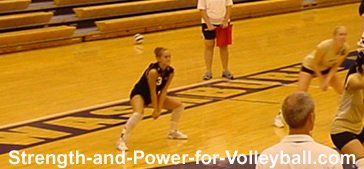
Passing Volleyball Forearm Technique
- Use the hips, legs, and shoulders to pass the ball.
- Pass the ball with your shoulders, not by swinging your arms
- Don't move your head when following the ball to your arms, just move your eyes
- When playing the ball away from your body, extend your passing platform away from your body as you bend at the waist and shrug your shoulders.
- Shoulders should be over the knees with your eyes following the ball to your arms.
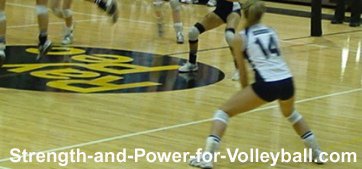
Overhead Passing Volleyball Skills
When playing the ball with the hands overhand to pass a deep, hard, flat serve keep your hands firm and hold them closer together than you would when setting or passing an easy free ball.
Feet should be spread with the hips, shoulders, and knees square facing your target.
The fingers and hands should push straight through when playing the ball. Having the hands firm and close together helps you control the ball.
Players being served deep can use this technique by starting midcourt and then taking a step back as they take the ball.
Front row players can use the overhand technique to take short serves with their hands rather than being force to pass with their forearms.
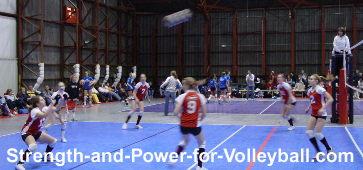
Receiving the Ball Overhead
First ball, double contact
Since it is legal
to have multiple contacts in a single attempt to play the ball on a
teams first contact, coaches are utilizing volleyball skills for
overhand passing more than ever. Some coaches even teach players to pass
this ball with their fingers quickly to avoid being called for a lift.
Deciding whether to teach passing overhead or with the forearms is often
difficult. By teaching multiple passing techniques players are given
the opportunity to develop their own unique
passing strategies and techniques.
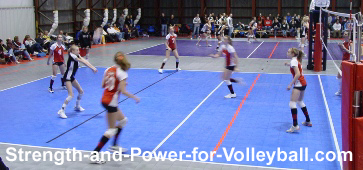
Which is Better? Forearm Pass or Overhead Pass?
If you enjoyed these tips and would like to keep it close to you at any time, just save this pin to your Pinterest Volleyball Training Board.
Passing Volleyball Related Pages
Passing DrillsVolleyball › Volleyball Techniques › Volleyball Passing
